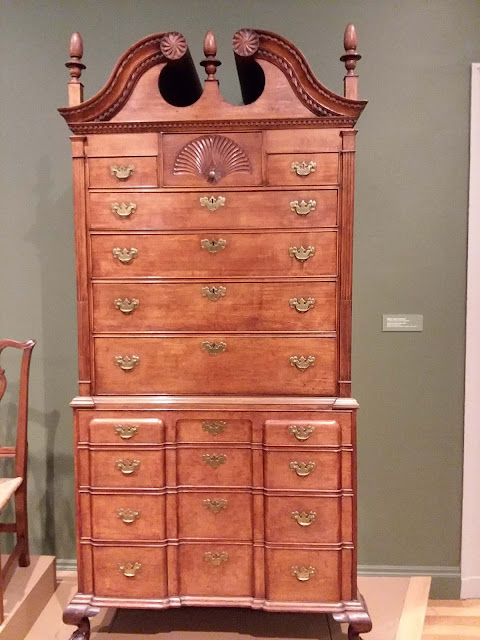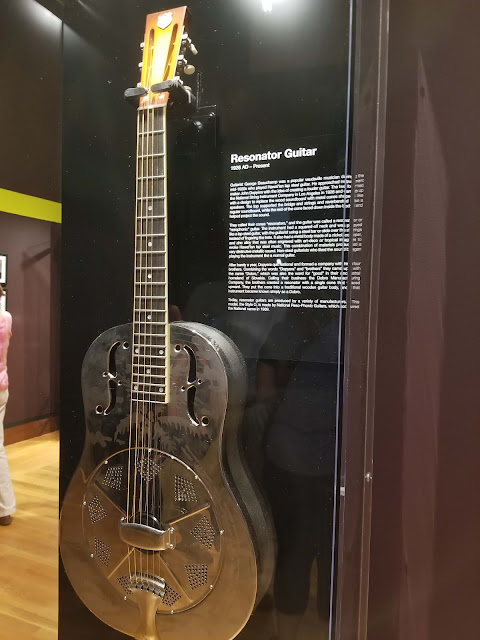September 17, 2019 - September 21, 2019

We moved south in New Hampshire, camping a bit west of Concord which put us in position to see two AAA Gems in the area. Having seen the Pleasant Hill Shaker Village in Kentucky we wanted to see the Canterbury Shaker Village in Canterbury, NH. Established in 1792 it was the 7th Shaker village in the U.S. at that time. It lasted until 1992 when the last Shaker sister who resided there died. At it's height in 1850, 300 people lived at Canterbury Village on over 3000 acres.
 |
| Old black and white picture of Canterbury Shaker Village. |
 |
| The shaker meeting house at Canterbury. |
 |
Inside of the meeting house.
There are two doors in the front of the meeting house - one for men and one for women.
Although they are equal in status they sit on opposite sides of the room and in general, don't intermingle within the community. |
 |
School room in the schoolhouse.
Although celibacy became the official position of the Shakers, they educated the children of families who joined the group.
In addition they also took in orphans and raised and educated them. |
The work required to sustain the community was divided into the men's work and the women's work. The men did all the field work, made furniture and other items needed by the society, chopped and split wood, milked the cows, etc. The women did the cooking, laundry, cleaning and sewing. Both men and women were involved with making items that were sold to the public such as maple syrup, yarn, furniture, brooms, various types of relishes and jams and the "Dorothy" cloak (see below). "Dorothy" has nothing to do with the Wizzard of Oz - but rather with the name of the sister who created the design. These cloaks were in high demand for a period of time and could be found hanging in any number of high society closets.

Although the work was hard, everyone rotated to a different job every 4 weeks - thus ensuring that no one was stuck doing the same thing month after month, year after year.
Doing laundry for 300 people was a big job and, as with everything they did, they organized it for efficiency.
 |
| Sorting bins in the laundry facility. |
 |
| Row of sinks in the laundry facility. |
 |
One of a row of industrial size washing machines.
They bought their first washing machine, improved it's design, then sold the improved model to hotels, sanitariums, hospitals, etc. Anywhere where large loads of laundry were done routinely. This brought in much needed money to the society. |
 |
| Industrial size mangle for ironing sheets, etc. |
 |
Pull out drying racks on the second floor of the laundry.
They circulated the heat from the steam engine which ran the washers to this area to facilitate drying. |
 |
| Ironing and folding room in the laundry. |
 |
Sorting baskets for finished laundry. Each is labeled with the information on where it should be delivered.
Every building, cupboard and drawer in the community was labeled to ensure things got back to where they belonged. |
 |
| Kitchen |
 |
| Women's dining area. |
 |
| Men's dining area. |
 |
| Syrup shop. Other canned items like chutneys, jams, relishes, etc. were also made here. |
 |
| The brothers made the famous oval shaker boxes to sell to the outside world. |
 |
| This box has just been nailed together on the mold used to create it's shape. As the copper tack is pounded into the metal plate it creates a rivet like end on the tack, ensuring it remains in place. |
 |
| Shaker chairs with different patterns webbing. These chairs were typically sold to the outside world. |
 |
Broom making shop. The Shakers developed the broom as we know it today, flat rather than round.
This was another product sold to the outside world. |
 |
| Printing room. They printed their own books, hymnals, etc. |
 |
| The simplicity is what most people admire about Shaker furniture. |
 |
Shaker desk designed by one of the sisters.
Some of the drawers were on the side so they could be reached while sitting at the desk. |
The Shakers always welcomed technology that make their jobs easier. Wood heat was replaced when electricity was available to the community. Electricity also made lots of labor saving devices (as seen below) available to them.
 |
| Kitchenaid mixer. |
 |
| General Electric Refrigerator |
 |
| Electrolux vacuum cleaner |
 |
| Toasters, electric knives, electric frying pan and electric hot plate. |
In Manchester, NH we went to the Currier Art Museum where they have a wonderful collection of painting, furniture, sculpture, etc. Their special exhibit was about the history of guitars.
Some exquisite pieces in their American Furniture collection.
A couple of my favorite paintings in their American collection.
Some items from their contemporary collection.
 |
| Although these look like an old pair of leather shoes, these are actually ceramic with leather laces. |
 |
Closeup of a large television screen.
As you move in front of the screen it activates the screen and displays your movement. (see video below) |
press to play
 |
We both found this mesmerizing and just couldn't stop looking at it.
It's hard to comprehend how they made it but it's completely woven like a normal oriental rug.
I'm really quite in awe of it. |
 |
| The special exhibit at the Currier. |
Just a few examples of the many guitars exhibited. (The reflections of the cases around the guitars make them hard to photograph.)
In addition to the guitars they showed pictures of famous musicians and their guitars as well as pictures of album covers from the past.
The largest "piece" belonging to the Currier is the Zimmerman House designed in 1950 by Frank Lloyd Wright. Having seen several other Frank Lloyd Wright homes we couldn't pass this by. No interior pictures were allowed however.
 |
| Left front of the home. |
 |
| Right front of the home. |
 |
| Rear of the home from the garden area. |
 |
| Left rear side of the home. |



















































